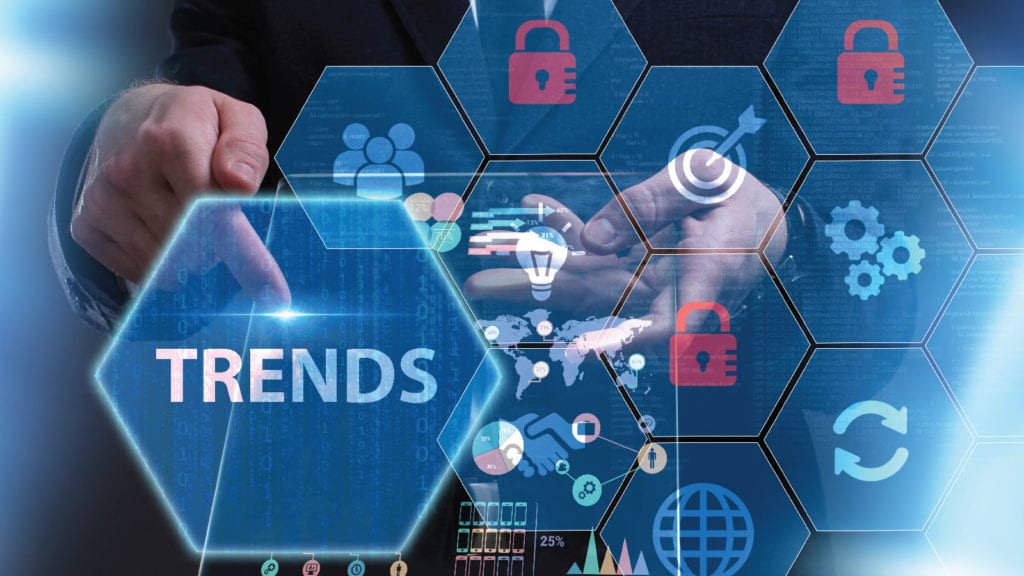Artificial Intelligence isn’t just about robots anymore—it’s everywhere. From chatbots and recommendation systems to smart assistants like Alexa and Siri, AI has seeped into daily life. Businesses use AI for customer service, data analysis, and even predicting market behavior.
Machine Learning’s Impact on Automation
Machine Learning enables systems to learn from data and improve over time. Factories, hospitals, and even logistics networks are adopting ML to automate complex tasks, reducing human error and boosting efficiency. Simply put, AI and ML are becoming the backbone of modern automation.
Generative AI Revolution
AI Content Creation Tools
Generative AI, like ChatGPT and DALL·E, can now create text, images, videos, and even code. These tools help professionals save time, brainstorm ideas, and innovate faster than ever.
Ethical and Creative Implications
However, the rise of generative AI also raises ethical concerns—authenticity, copyright, and misinformation. Balancing innovation with responsibility will define this era of AI advancement.
5G and Beyond
How 5G Transforms Connectivity
5G is revolutionizing how we connect. With ultra-fast speeds and low latency, it enables seamless streaming, remote surgeries, and real-time gaming experiences.
The Future of 6G Technology
As 6G development begins, expect even higher speeds and more intelligent networks integrating AI-driven optimization. It could even power fully immersive digital worlds.
Internet of Things (IoT)
Smart Homes and Cities
IoT connects everyday objects to the internet—refrigerators, cars, and even entire cities. Smart cities use IoT to monitor traffic, manage energy, and enhance urban living.
Industrial IoT Applications
In manufacturing, IoT sensors predict machine failures, reducing downtime. This real-time data drives smarter decision-making and cost efficiency.
Quantum Computing
What Makes Quantum Computing Revolutionary
Quantum computers use qubits to perform calculations exponentially faster than classical computers. This technology could revolutionize cryptography, drug discovery, and financial modeling.
Current Developments and Challenges
Despite its potential, quantum computing faces hurdles—high costs, hardware instability, and scalability. Still, companies like IBM and Google are racing to achieve “quantum supremacy.”
Blockchain and Decentralized Systems
Beyond Cryptocurrency
Blockchain isn’t just about Bitcoin. It’s a secure, transparent ledger system applicable in supply chains, digital identities, and even voting systems.
Blockchain in Supply Chain and Healthcare
With blockchain, supply chains can trace products from origin to consumer. In healthcare, it ensures data integrity, improving trust and transparency.
Cybersecurity Advancements
AI-Driven Cybersecurity
As digital threats evolve, cybersecurity must too. AI now predicts and mitigates attacks before they occur, enhancing system protection.
Zero Trust Architecture
Zero trust assumes no user or device is inherently safe. This model minimizes risks by continuously verifying every digital interaction.
Extended Reality (XR)
VR, AR, and MR Explained
Extended Reality (XR) blends Virtual Reality (VR), Augmented Reality (AR), and Mixed Reality (MR). These technologies bridge the physical and digital worlds.
Use Cases in Entertainment and Education
From immersive gaming to virtual classrooms, XR enhances engagement and learning experiences like never before.
Edge Computing
Difference Between Edge and Cloud Computing
While cloud computing centralizes data, edge computing processes it closer to the source. This reduces latency and enhances speed—crucial for real-time applications.
Benefits for Real-Time Processing
Industries like autonomous driving and smart factories rely on edge computing for instant decisions that cloud systems can’t match.
Green Tech and Sustainability
Eco-Friendly Data Centers
Tech giants like Google and Amazon are investing in green data centers powered by renewable energy. This reduces carbon footprints and supports sustainability.
Renewable Energy Innovations
Solar panels, wind farms, and smart grids are becoming smarter, integrating AI to optimize power usage and reduce waste.
Biotechnology and Health Tech
AI in Healthcare
AI assists doctors by predicting diseases, analyzing scans, and personalizing treatments. It’s saving lives by enhancing accuracy and efficiency.
Wearable Tech for Personal Health Monitoring
Smartwatches and biosensors track heart rate, sleep, and oxygen levels—turning users into proactive participants in their own healthcare.
Autonomous Vehicles
Self-Driving Technology Evolution
Companies like Tesla and Waymo lead the self-driving car race. These vehicles use AI, sensors, and cameras to navigate safely and efficiently.
Challenges and Legal Aspects
While progress is impressive, regulations, safety concerns, and ethical dilemmas continue to slow mass adoption.
Robotics and Automation
Role in Manufacturing and Logistics
Robots now handle repetitive and hazardous tasks, improving safety and precision. In warehouses, robotic systems streamline packaging and delivery.
Human-Robot Collaboration
The future isn’t about replacing humans—it’s about collaboration. “Cobots” (collaborative robots) work alongside people, increasing productivity and innovation.
Conclusion
The world stands at the dawn of a new technological era. From AI to quantum computing, emerging technologies are interwoven, creating a smarter, faster, and more sustainable future. But as technology advances, ethical innovation and responsible use remain crucial. The future isn’t just about machines—it’s about how we use them to improve humanity.
FAQs
1. What is the most influential emerging technology right now?
Artificial Intelligence (AI) is currently the most transformative, influencing nearly every industry.
2. How is 5G different from previous network generations?
5G offers ultra-fast speeds, lower latency, and supports more connected devices simultaneously.
3. What is the Internet of Things (IoT)?
IoT connects everyday objects to the internet, enabling them to send and receive data.
4. Are autonomous vehicles safe?
While progress is promising, safety and regulatory challenges must be addressed before mass adoption.
5. How does technology impact sustainability?
Emerging green tech innovations, like AI-driven energy systems, are helping reduce carbon footprints globally.
